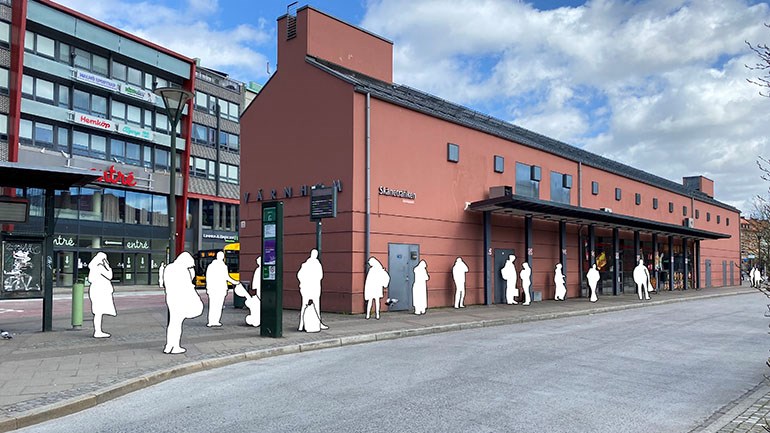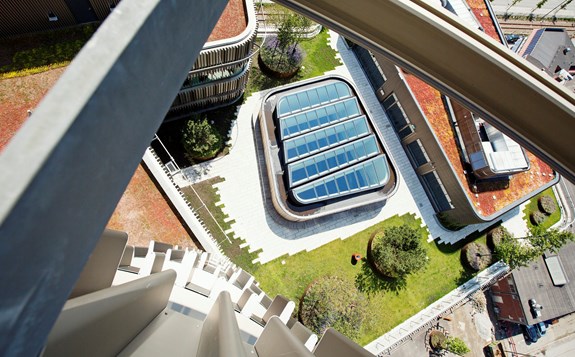The science and art of waiting for a bus

"Waiting is not as non-active as you might think: one must decide where to stand; everyone has their own tactics, whether they are explicit or not." Malmö University researchers investigate how we wait for buses from an urban spaces perspetcive. Photo: Hoai Anh Tran, editing: Jeongmin Hyeong
Should one stand right next to the bus stop sign, in the near vicinity, or sit on the bench? The approaches differ when it comes to waiting for a bus.
Researchers at Malmö University have studied the different strategies that people adopt when they must be in the same small space with strangers.
Bus stops are a special kind of public space.
Professor Hoai Anh Tran
The importance of bus stops is something that is neglected in research, says Associate Professor Hoai Anh Tran, who adds that traffic researchers tend to focus on the actual bus journey, on accessibility and efficiency – not the waiting time.
“For those of us who study public places, the focus is often on streets and squares but not bus stops. However, for many, waiting for a bus is a crucial everyday activity,” says Tran, who is based at the Department of Urban Studies.
Bus stops are relatively confined spaces where one is forced to be with others, as opposed to other public places where you can choose to leave if you prefer. The question the researchers posed was what people do while they wait. Tran has studied, documented, and interviewed travellers at five city bus stops used by commuters.
“Waiting is not as non-active as you might think: one must decide where to stand; everyone has their own tactics, whether they are explicit or not.” After the observations, she was able to distinguish three main strategies:
- Those who want to be first on the bus tend to stand impatiently at the spot where the bus will stop; often those who are going to travel a little further want a seat on the bus.
- Those who wait a little further away from the stop want to be away from the waiting crowd before boarding with others. If there is a lot of space nearby, many pull away a bit but stand where they can see the bus coming. If there is not much room on the pavement, people spread out in a line along the road.
- Those who sit alone in the bus shelter but leave when someone else sits down, tend to pace back and forth while they wait.
But why is it of interest how we wait for a bus?
“Bus stops are a special kind of public space. In urban planning there has been a lot of focus on public spaces as sites of social interactions. Our study shows that active interactions do not always happen in spaces shared by strangers. At bus stops, another type of interaction takes place through tacit spatial negotiation where one pays attention and relates to others in a limited space,” says Tran.
Shielding oneself and creating a place for oneself without disturbing others is also a way of learning to be with others in public spaces, she says. Coexisting with others, and the fact that we are necessitated to share space and to adapt to one another, indeed constitutes the public quality of bus stops.
As part of the study, the research group asked an art collective to make a temporary installation at two busy bus stops. The bus shelters were decorated, and benches were extended with a section that was painted pink. It was observed that young people waiting together sat close to each other on the pink section and seemed happy to do so. “People said that the playful installation put them in a good mood,” adds Tran.



